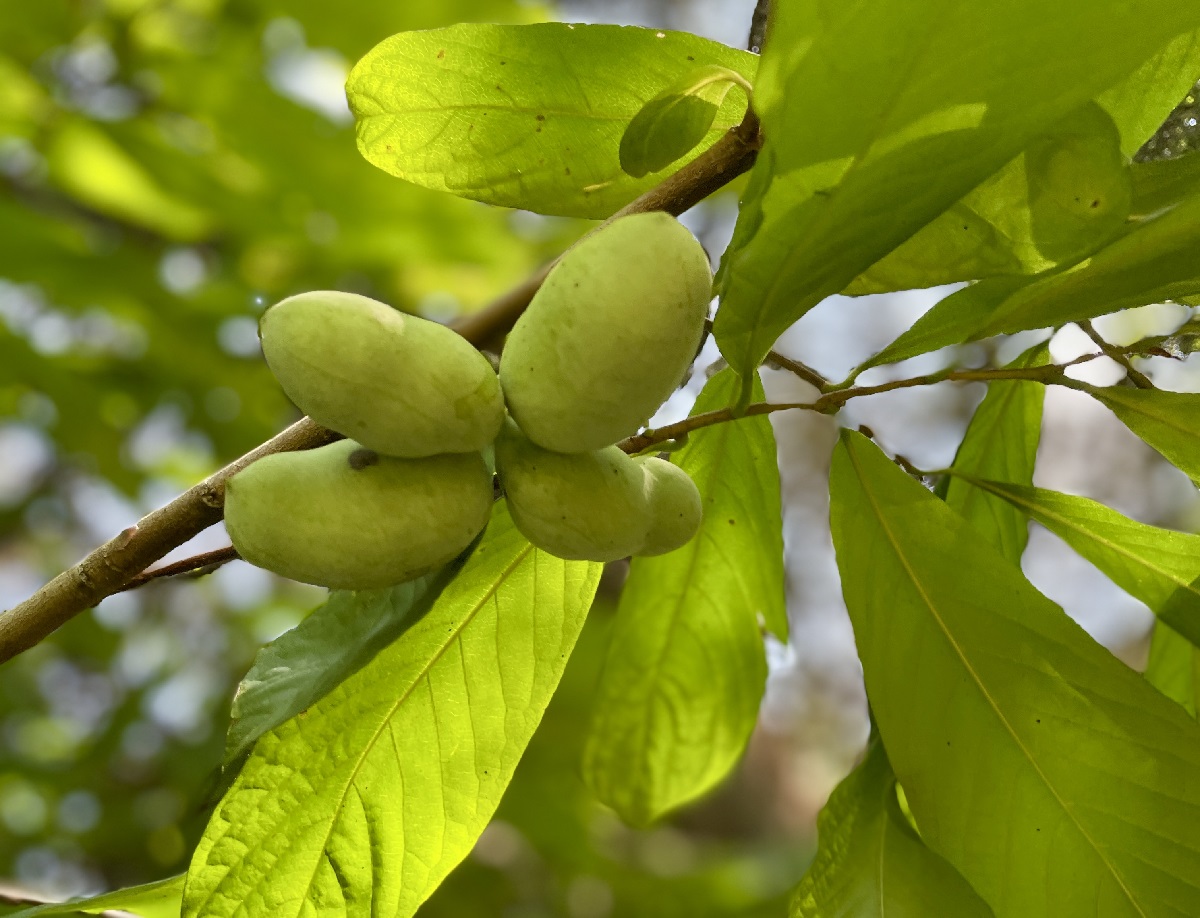
UT Gardens’ February Plant of the Month
Submitted by Karen Caspary, horticulturist and volunteer coordinator, UT Gardens, Knoxville
KNOXVILLE, Tenn. – “Where oh where is dear little Susie? Way down yonder in the Pawpaw Patch….”
If you grew up in the eastern United States, you may have heard this folksong around the campfire. Once called “America’s forgotten fruit,” the common pawpaw tree (Asimina triloba) is a rich source of legends and lore, evoking bygone times and hidden places beside rivers and forest glens.
The pawpaw is and has always been a beloved food of the indigenous peoples of eastern North America; the botanical name Asimina originates from Algonquin-speaking peoples such as the Miami, Shawnees and Powhatans. It was said to be the favorite fruit of Daniel Boone and was planted by both Thomas Jefferson and George Washington. Wild pawpaws fed untold thousands of travelers throughout the history of this land, including enslaved African Americans who escaped to the North. Many an old-timer will remember days spent gathering pawpaws, but sometime in the late 20th century the tradition fell from mainstream cultural awareness. In recent decades, thanks to the efforts of dedicated and talented researchers, as well as the curiosity of new generations, the mysterious pawpaw has come back into the forefront.
The largest fruit native to North America, the pawpaw is the only temperate member of the Annonacea, or custard apple family. Common pawpaw is primarily a bottomland species, growing wild in the low country along rivers and streambanks. It is an understory tree reaching between 15 to 20 feet at maturity, and it suckers readily, forming large colonies of genetically identical individuals.
Pawpaws are not self-fertile, and the patch will need a different pawpaw nearby to cross-pollinate. Its burgundy flowers appear in the early spring. No conclusive evidence exists regarding which insects pollinate the trees, but the shape of the flowers strongly indicates beetles. Flies also are suspected to be important pollinators. Speaking of insects, the pawpaw tree is the exclusive host plant for the zebra swallowtail butterfly, our state butterfly, which is rare in some areas. There are no serious diseases or pests that affect pawpaws, and deer or other herbivores do not browse on their leaves.
The fruits are egg-shaped, 2-6 inches long and full of yellow-orange, custard-textured pulp as well as several large black seeds. The taste is usually described as somewhere between a banana and a mango. The grey-green fruits ripen sometime in September in Tennessee. They are eaten raw or processed into pulp by removing the skin and seeds. The pulp is made into jams, ice cream, added to baked goods or even used in beers, meads and spirits.
Those interested in growing pawpaws can plant individual trees in an orchard style (their suckers will need to be trimmed periodically), or they can establish a pawpaw patch. They grow in full to part sun, and prefer moist well-draining soils but can be enticed to grow in drier upland areas. Because of their strong taproots, trees cannot be transplanted from the wild, but starting from seed is fairly straightforward.
Seed-grown saplings are common in local nurseries. It’s recommended to buy several from different sources–the more genetic diversity, the better. If the trees have a sufficient cross-pollinator, they will begin to bear fruit in 6-7 years. Buying grafted trees of a known cultivar is the only way to truly predict taste and size of fruit set.
The Pawpaw Research Program at Kentucky State University has made incredible strides in breeding and propagation and has released a selection of named cultivars. We recommend visiting their website for a wealth of other growing information.
The UT Gardens includes plant collections located in Knoxville, Crossville and Jackson, Tennessee. Designated as the official botanical garden for the State of Tennessee, the UT Gardens are part of the UT Institute of Agriculture. The Gardens’ mission is to foster appreciation, education and stewardship of plants through garden displays, educational programs and research trials. The Gardens are open during all seasons and free to the public. For more information, see the Gardens website: utgardens.tennessee.edu.
The University of Tennessee Institute of Agriculture is comprised of the Herbert College of Agriculture, UT College of Veterinary Medicine, UT AgResearch and UT Extension. Through its land-grant mission of teaching, research and outreach, the Institute touches lives and provides Real. Life. Solutions. to Tennesseans and beyond. utia.tennessee.edu.